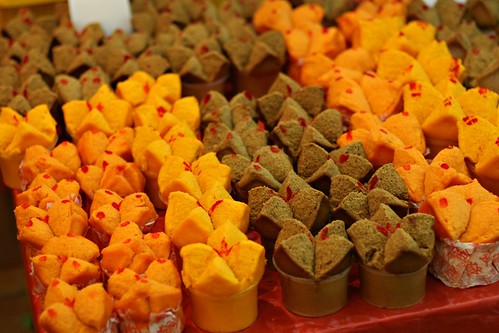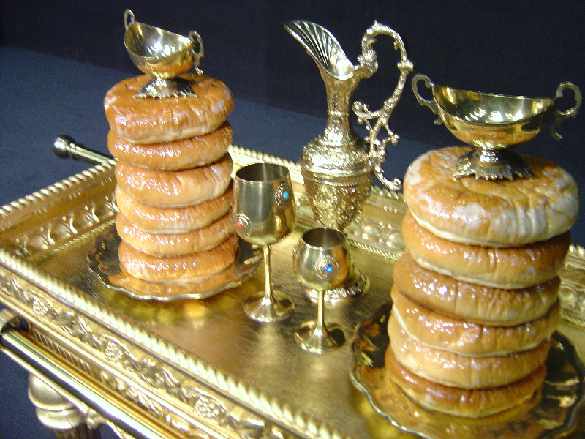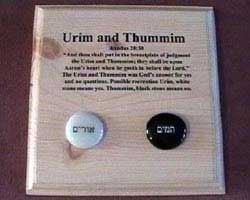Pastor Mark's Sermon on Sunday - Part 2
The worship that the Chinese have, especially the Teochews and Hokkiens, pray to the Most High God on the 9th day of the Chinese New Year.
In front of the window or door, they arrange 3 tables for prayer. These are covered in red cloth like the altar of sacrifice of the Jews which was sprinkled with the blood of the lamb so it appears all red . This arrangement also seems similar to the Outer Court, Holy Place and Holy of Holies arrangement of the Jews.
The first table has a plaque/paper with the God's name on it. (I missed out what else was placed on this table in my notes... Wonder if Ian can recall? Grins) The Chinese got no image of God so they do that.
The second table has bread on it. It is leavened because unleaven - the Chinese probably don't know lah! So they put a "Huat Kweh" there - it is open like a mouth to worship God with red dots. The red dots might represent the blood of Jesus.

(Above: Huat Kueh, Below: Table of Shewbread)

This table is like the table of the Shewbread of the Jews. The Jews put the Panim - I learn this from Pastor Prince one hahaha - or the face bread and sprinkle frankincense on it. The frankincense represents the sweet smelling fragrance of Christ.
The third table has incense and candles or oil lamps on it. They usually use bronze ware to contain them. This is similar to the Jewish tradition where they put the candelabra. This symbolises Jesus the light of the world or the Spirit of God.
And both of them, after the sacrifices finish you eat them at home.
For the Jews - the High Priest, highest ranking, ask for the permission and favour to eat the sacrifices after it's done.
For the Chinese - the Eldest Patriach of the family ask for the permission and favour to eat the sacrifices after it's done.
The Chinese use the Puah Pwey (two half moon shaped pieces of wood/plastic) to see if the God says can or cannot. If one faces up, one faces down means can, can eat. If both face down, means cannot eat yet lah. If both face up, the God is smiling on you but ask you don't disturb him yet. He still not finished lah.

The Jews used the Urim and Thummim, found on the High Priest breastplate, to ask for favour and directives from God. (see also Exodus 28:29-30, Ezra 2:63)



Comments
Post a Comment